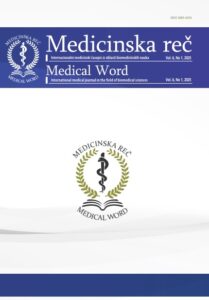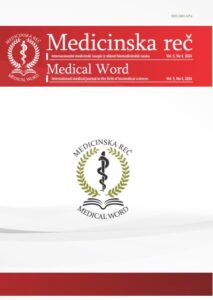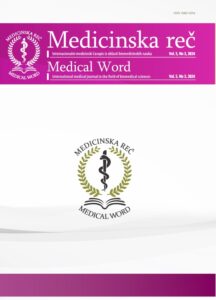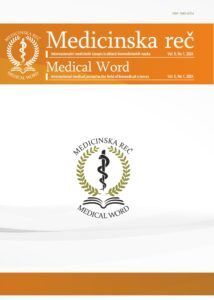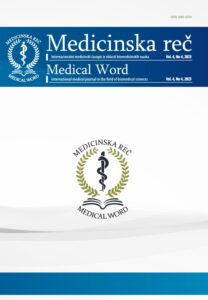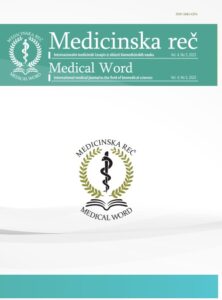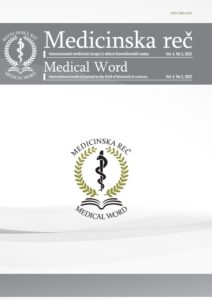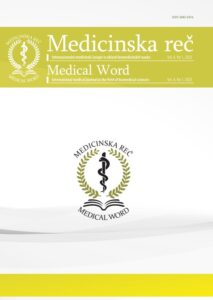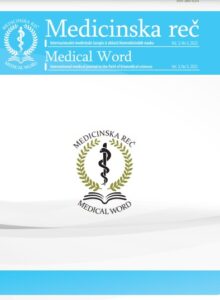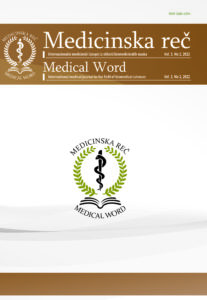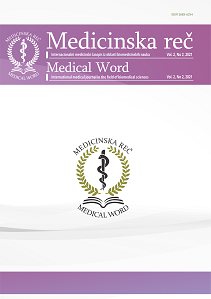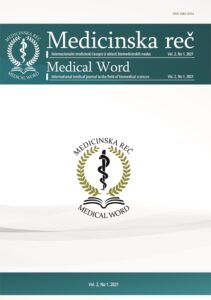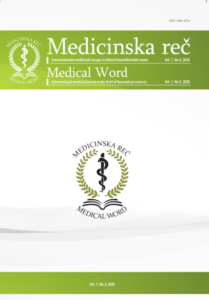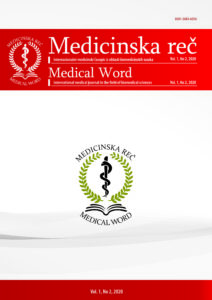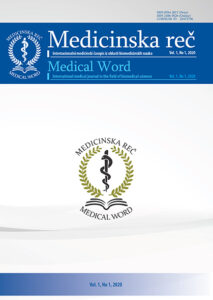Pragmatism and smoking cessation: the role of harm reduction in creating healthier smoke-free societies
Medical Word 2021; 2(2): 76–80
Current Topic
Krzysztof Filipiak, Nadjib Bouayed
Abstract
Despite the extensive body of evidence demonstrating the risks of tobacco, many people continue to smoke. Medical science has not yet found a ‘cure’ for this. Instead, healthcare professionals (HCPs) have access to a range of strategies, including pharmacological and psychological interventions, to help support smoking cessation. Yet giving up is not easy and not everyone succeeds. The reasons why are as varied as they are complex, ranging from physical addiction to an emotional dependence on the habit. Barriers include a lack of adequate support from smoking cessation services or HCPs, withdrawal symptoms, and psychosocial factors such as the challenges of adapting to behaviour change.
For those people who are unable or unwilling to quit, harm reduction strategies can help reduce the risks associated with smoking, from cardiovascular disease to cancer. While the evidence base is still relatively immature, some studies have shown that products such as e-cigarettes and heated tobacco systems can deliver the addictive nicotine with significantly fewer toxicants and carcinogens than cigarettes.
In this interview, Krzysztof Filipiak, past President of the Polish Society of Hypertension (PTNT) and former Deputy Rector Magnificus and Dean for Science at the Medical University of Warsaw, Poland, and Nadjib Bouayed, President of the Algerian Association of Vascular Surgery of the University Hospital of Oran, Algeria, share their views on the pragmatic approach. They explain how finding the best intervention for each patient is of utmost importance and why harm reduction strategies have a place in smoking cessation services. They also review the current literature on products such as heat-not-burn (HnB) systems and identify gaps in the evidence base.
Key words: smoking cessation, addiction, harm reduction, heated tobacco products
References
- World Health Organization. Tobacco. 2021. Available at: https://www.who.int/news-room/fact-sheets/detail/tobacco. Last accessed: 12 August 2021.
- Royal College of Physicians Tobacco Advisory Group. Nicotine without smoke: tobacco harm reduction. 2016. Available at: https://www.rcplondon.ac.uk/projects/outputs/nicotine-without-smoke-tobacco-harm-reduction. Last accessed: 16 August 2021.
- Centers for Disease Control and Prevention (CDC). How Tobacco Smoke Causes Disease: The Biology and Behavioral Basis for Smoking-Attributable Disease: A Report of the Surgeon General. 2020. Available at: https://www.ncbi.nlm.nih.gov/books/NBK53021/. Last accessed: 4 May 2021.
- Centers for Disease Control and Prevention (CDC). Smoking & tobacco use. 2020. Available at: https://www.cdc.gov/tobacco/basic_information/health_effects/index.htm#:~:text=Smoking%20causes%20cancer%2C%20heart%20disease,immune%20system%2C%20including%20rheumatoid%20arthritis. Last accessed: 4 May 2021.
- Centers for Disease Control and Prevention (CDC). Lung cancer: what are the risk factors for lung cancer? 2020. Available at: https://www.cdc.gov/cancer/lung/basic_info/risk_factors.htm#:~:text=Cigarette%20smoking%20can%20cause%20cancer,and%20causes%20acute%20myeloid%20leukemia. Last accessed: 4 May 2021.
- Rezaei S, Akbari Sari A, Arab M, Majdzadeh R, Mohammad Poorasl A. Economic burden of smoking: a systematic review of direct and indirect costs. Med J Islam Repub Iran 2016; 30: 397.
- NHS England. Statistics on smoking, England – 2019. 2019. Available at: https://digital.nhs.uk/data-and-information/publications/statistical/statistics-on-smoking/statistics-on-smoking-england-2019. Last accessed: 4 May 2021.
- McLaughlin I, Dani JA, De Biasi M. Nicotine withdrawal. Curr Top Behav Neurosci 2015; 24: 99-123.
- Piepoli MF, Hoes AW, et al; ESC Scientific Document Group. 2016 European Guidelines on cardiovascular disease prevention in clinical practice: The Sixth Joint Task Force of the European Society of Cardiology and Other Societies on Cardiovascular Disease Prevention in Clinical Practice (constituted by representatives of 10 societies and by invited experts) Developed with the special contribution of the European Association for Cardiovascular Prevention & Rehabilitation (EACPR). Eur Heart J 2016; 37(29): 2315-81.
- British Thoracic Society (BTS). British Thoracic Society recommendations for hospital smoking cessation services for commissioners and health care professionals. 2012. Available at: https://www.brit-thoracic.org.uk/media/70157/bts-recommendations-for-smoking-cessation-services_.pdf. Last accessed: 12 August 2021.
- Hawk M, Coulter RWS, Egab JE., et al. Harm reduction principles for healthcare settings. Harm Reduct J 2017; 14(1): 70.
- Cox S, Dawkins L. Global and local perspectives on tobacco harm reduction: what are the issues and where do we go from here? Harm Reduct J 2018; 15(1): 32.
- The National Academies of Sciences, Engineering and Medicine. public health consequences of e-cigarettes conclusions by level of evidence. (2018). Available at: https://www.nap.edu/resource/24952/012318ecigaretteConclusionsbyEvidence.pdf. Last accessed 23 August 2021.
- McNeill A, Brose LS, Calder R, Bauld L, Robson D. Evidence review of e-cigarettes and heated tobacco products 2018: a report commissioned by Public Health England. Available at: https://assets.publishing.service.gov.uk/government/uploads/system/uploads/attachment_data/file/684963/Evidence_review_of_e-cigarettes_and_heated_tobacco_products_2018.pdf. Last accessed: 4 May 2021.
- Public Health England (PHE). Vaping in England: 2021 evidence update summary. 2021. Available at: https://www.gov.uk/government/publications/vaping-in-england-evidence-update-february-2021/vaping-in-england-2021-evidence-update-summary. Last accessed: 4 May 2021.
- Bullen C, Howe C, Laugesen M., et al. Electronic cigarettes for smoking cessation: a randomised controlled trial. Lancet 2013; 382(9905): 1629-37.
- Henningfield JE. Nicotine medications for smoking cessation. N Engl J Med 1995; 333(18): 1196-203.
- Etter JF, Bullen C. A longitudinal study of electronic cigarette users. Addict Behav 2014; 39(2): 491-4.
- Mallock N, Böss L, Burk R, et al. Levels of selected analytes in the emissions of “heat not burn” tobacco products that are relevant to assess human health risks. Arch Toxicol 2018; 92(6): 2145-9.
- Biondi-Zoccai G, Sciarretta S, Bullen C, et al. Acute effects of heat-not-burn, electronic vaping, and traditional tobacco combustion cigarettes: the Sapienza University of Rome-Vascular Assessment of Proatherosclerotic Effects of Smoking (SUR-VAPES) 2 randomized trial. J Am Heart Assoc 2019; 8(6): e010455.
- Lüdicke F, Ansari SM, Lama N, et al. Effects of switching to a heat-not-Burn tobacco product on biologically relevant biomarkers to assess a candidate modified risk tobacco product: a randomized trial. Cancer Epidemiol Biomarkers Prev 2019; 28(11): 1934-43.


